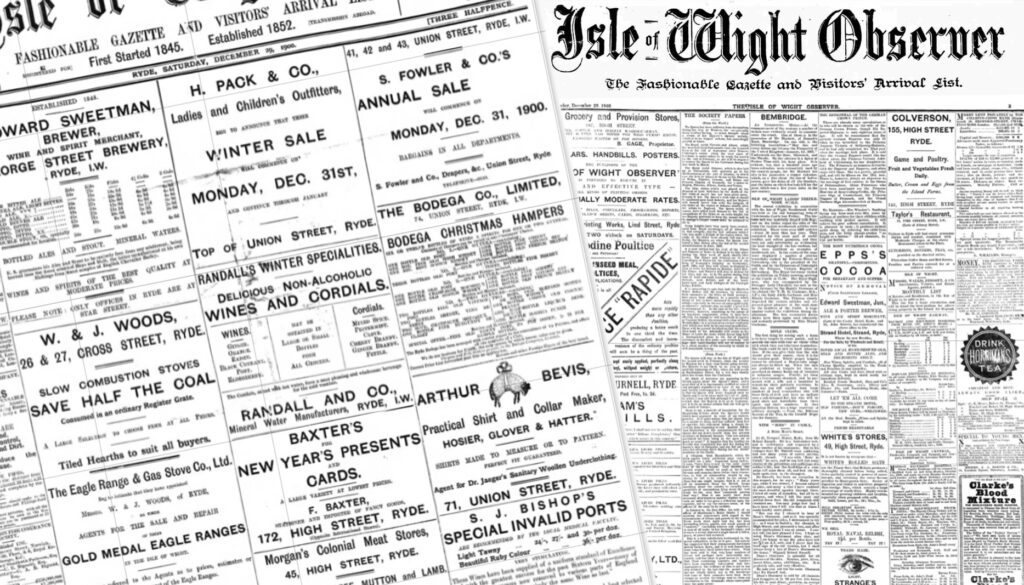As we celebrate the seventy years of our Queen’s reign, we thought we would look back at a previous Jubilee of a former sovereign. The forthcoming Diamond Jubilee of Queen Victoria, to be celebrated on 20th and 21st June 1887, was the subject of an extremely long article in the IW Observer of June 18th. Here is an extract looking back over some changes during her time on the throne.
At the period of the Queen’s accession no one could have looked forward to the changes that have occurred, and anyone prognosticating such a future as has now become the past, would have been regarded as at best, a dreamer, the harmless character of whose delusions would alone have saved him from incarceration in a lunatic asylum. Railways were then only in their infancy, and magnates still travelled from their metropolis to their country seats in their own carriages. Ocean steamships, such as have now placed every part of the habitable world within easy reach were unknown, and the daily communication between Europe and America was pronounced to be an impossibility by practical men. The semaphore, or post with moveable signalling arms, still stood on the roof of the Admiralty at Whitehall, and in those days when the weather was propitious, communicated with Greenwich, and so on by stations to Sheerness and Dover; for the electric telegraph was unknown, and the instantaneous intercommunication of news from one part of the world to another was no more believed to be possible than the boast of Shakespeare’s fairy that he could “put a girdle round about the earth in forty minutes.” The now forgotten Thames Tunnel was regarded as one of the wonders of the world, and foreigners visiting London rarely failed to pay their shillings to see this, then unfinished, monument of Brunel’s skill, which has been dwarfed into obscurity by the greater achievements in the same direction. In the application of machinery to daily life the progress has been immense. The sewing machine has revolutionised needlework; gas engines have introduced a new motive power into thousands of establishments; cycles have conveyed hundreds of thousands of riders into districts that would have remained to them comparatively unknown; the homes, even of the poorest, have been brightened by the use of mineral oils, and are now better illuminated than the dwellings of the rich ones at the commencement of her Majesty’s reign. The electric light was then undreamt of and dynamos unknown.



